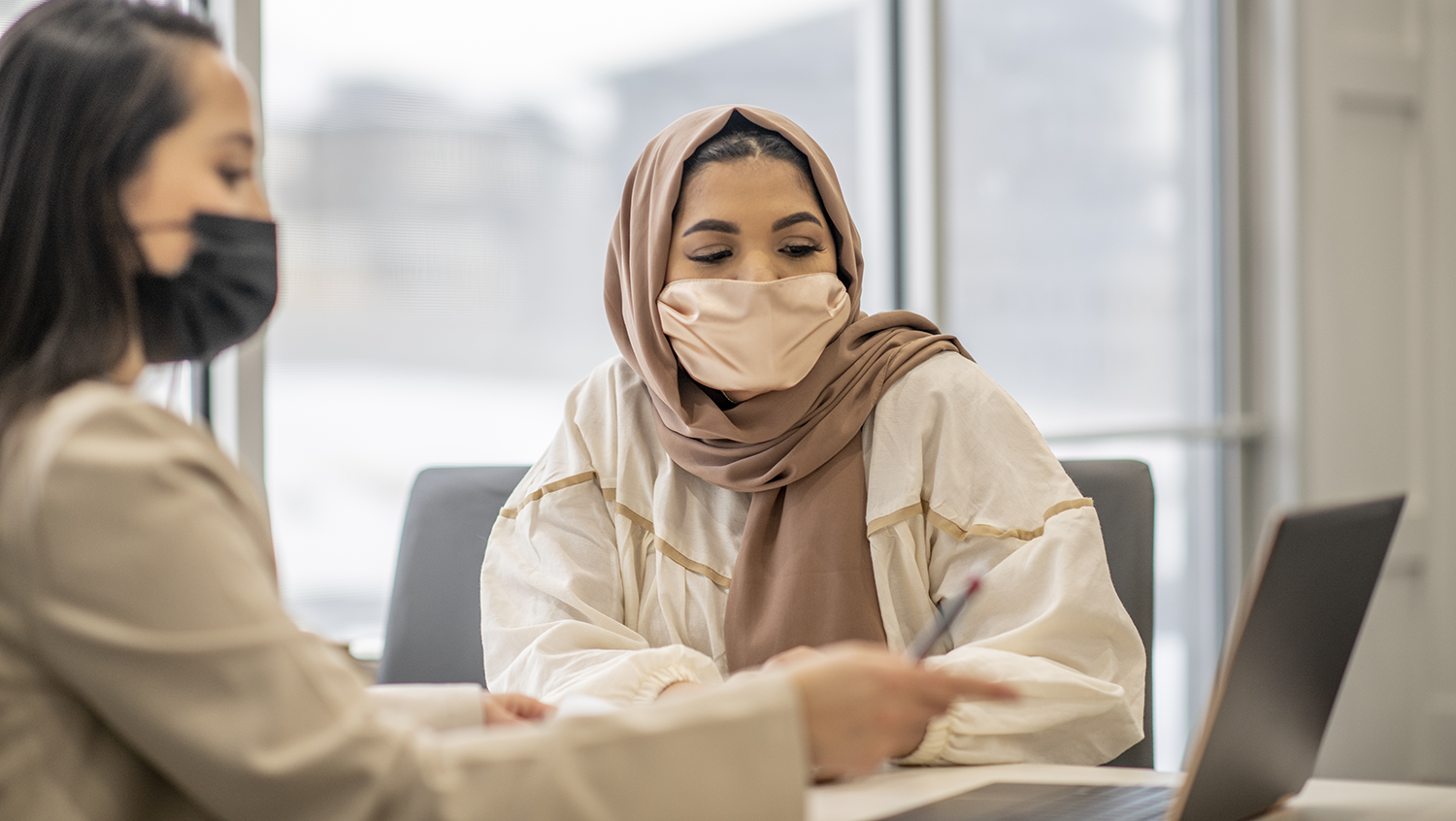Community Insights Survey Debunks Three Misconceptions About Immigrant and Refugee Health Care Engagement
May 4, 2022

FatCamera, Getty Images
The Immigrant & Refugee Health Canter, the Immigrant Task Force, and NRC Health team up to survey BMC who were patients born outside the U.S.
Immigrants, refugees, and asylum seekers face many healthcare barriers, ranging from the lack of health insurance coverage and financial resources, to low language and health literacy, discrimination, and fear of deportation. With a deep-seated interest in immigrant and refugee health care, Boston Medical Center has provided programs to these populations since the 1990s. The hospital has provided care to thousands of immigrant and refugee patients over the decades even though there is a common misconception that reaching these populations can be difficult. “If you research communities across the U.S., immigrants are frequently reported as hard to reach with low presentation to care,” says Sondra Crosby, MD, co-chair of Boston Medical Center’s Immigrant Task Force. Crosby and fellow co-chair, Lily Sonis, LICSW, MPH, work closely with the Boston Medical Center Immigrant & Refugee Health Center (IRHC).
Launched In 2020, IRHC connects patients from Uganda, Syria, Haiti, Ukraine, Somalia, Nigeria, Afghanistan, and many other countries with all of the medical, mental health, and social services they need to heal, rebuild, and thrive. Since its start, the IRHC has served over 471 patients, delivered more than 6,450 clinical visits across primary care, mental health, and OB/GYN services, and connected patients with interpreters who speak 134 languages.
“This is a place where patients know they can come to have their needs met — all of which we consider to be fundamental — in the most efficient way possible, especially when they first arrive and are learning our healthcare system. And we want them to feel safe every step of the way,” says director Sarah Kimball, MD.
As part of a continuous effort to understand how BMC can better meet the needs of immigrant patients, the IRHC and the BMC Immigrant Task Force solicited the help of NRC Health to conduct an online Community Insights survey of their patients who were born outside the United States. The responses to the fall 2021 survey surprised the team by debunking three misconceptions about immigrant and refugee healthcare.
Misconception #1: With low presentation to care, U.S. immigrants are hard to research.
When the survey was fielded in the fall of 2021, 72% of the recipients opened the email, and 35%, or 147 patients, went on to complete the survey. When asked which barriers they have experienced getting medical care, respondents’ top three responses were unsurprisingly cost (28%), family and work responsibilities (19%), and a lack of transportation (15%).
However, many respondents wrote in that they have not experienced any barriers trying to get medical care. “It was surprising to me that so many immigrant patients have such high positive responses about knowing where to get treatment,” says Crosby. Unlike the hospital-wide surveys or in-clinic experiences her team has tried in the past, this targeted survey offered exciting new insights and a new avenue to dig deeper. “We have so many other unanswered questions about this population because we had no way to meaningfully seek their input. I’m excited about the opportunity here to be creative and improve care for immigrants and refugees.”
Misconception #2: Older immigrants are not digitally literate.
Another misconception that may have been broken by the IRHC’s survey results is that older people are digitally illiterate and can therefore not respond to online surveys. In fact, more than half of those who responded were over the age of 55. Eight percent were 75 or older.
“The ages of those who participated are significant. These individuals understood the survey was available and knew how to access it,” says Sophie Wilson, BMC Patient Insights Manager. “Are we losing people when we make assumptions?”
Misconception #3: There’s a low vaccine uptake within the immigrant community.
When asked what problems they faced during the pandemic, respondents’ top two responses were not being able to see family and friends (53%) and not being able to get to healthcare appointments in person (33%). Despite these issues, 88% of respondents stated they have access to COVID-19 testing; 71% stated they would have access to COVID-19 treatment, if needed; and 97% stated they have access to the COVID-19 vaccine.
These high rates of access are a testament to BMC’s outreach and collaborative effort during the pandemic to lessen the impact of COVID-19 on communities of color, says Wilson. “The model that BMC created to address COVID-19 is amazing,” she says.
Wilson thinks one of the reasons the survey was such a success is because it posed no risk to respondents’ immigration status. “The survey empowers the patient to self-identify status without it being linked to patient records,” she explains. “In addition, to access any of the Covid-19 vaccinations given in the community, there were no papers required. That sense of anonymity is what could have driven engagement. And as a result, there were more voices heard.” More research needs to occur to confirm this and some of the IRHC’s other initial findings, but the team is excited to have discovered another source of information they can use to improve the health and well-being of those they serve. “This survey provides an open door that we didn’t realize we had,” says Glory Ruiz, director of public health programs within BMC’s Infectious Diseases section. “It’s a tool that we can use in a very targeted way to solicit feedback in a timely manner. I see us developing improved models of care based on immigrant input, and using this tool as an extremely powerful instrument for policy change.”
Crosby says they could also use the survey tool to educate patients. “For example, we’re seeing high cardiovascular rates among asylum seekers,” she says. “Giving out information when they come into clinics is not a good way to reach populations, so this is a great new avenue for reaching so-called ‘hard-to-reach’ communities.”


